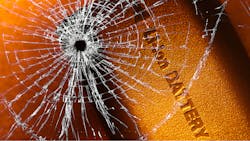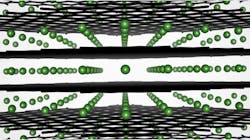One Reason Fast Charging Damages Li Batteries
Researchers at the Argonne National Laboratory have uncovered some interesting chemical behavior in Li batteries that partially explain why they can’t yet be recharged quickly.
Lithium-ion batteries, like most other batteries, have a positively charged cathode and a negatively charged anode, and they are separated by an electrolyte that moves lithium ions between them. But the anodes in Li batteries are typically made of graphite assembled out of small particles.
Lithium ions can insert themselves inside graphene anodes in a process called intercalation. If intercalation takes place normally, Li batteries successfully charge and discharge. If an Li battery is charged too quickly, however, the ions aggregate on the anode’s surface, creating a “plating” that damages the anode.
“Plating is a main cause of impaired battery performance during fast charging,” says Argonne battery scientist and researcher Daniel Abraham. “As we charged Li batteries quickly, the team found it plated the anode but also caused a buildup of reaction products inside the electrode’s pores.” As a result, the anode undergoes irreversible expansion, which degrades the battery’s performance.
Using scanning electron nanodiffraction, the team also discovered another change in the anode’s graphite particles. At the atomic level, fast charging distorts the lattice of graphite atoms at the particle edges, and this upset the intercalation process. “Basically, the atomic network in the graphite becomes warped, preventing lithium ions from finding their place inside the particles,” Abraham said. “Instead, they plate on the particles...The faster the Li battery is charged, the more atomically disordered the anode becomes, which ultimately prevents lithium ions from moving back and forth between the anode and cathode.”
He adds that there are two ways to solve this problem: Either find ways to prevent the disorder, or somehow modify the graphite particles so that the lithium ions intercalate more efficiently.

